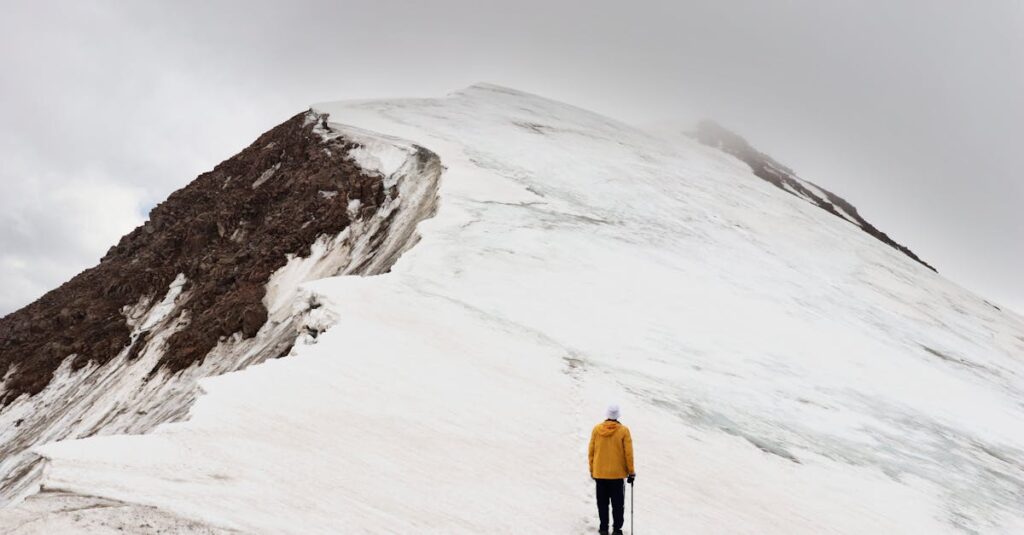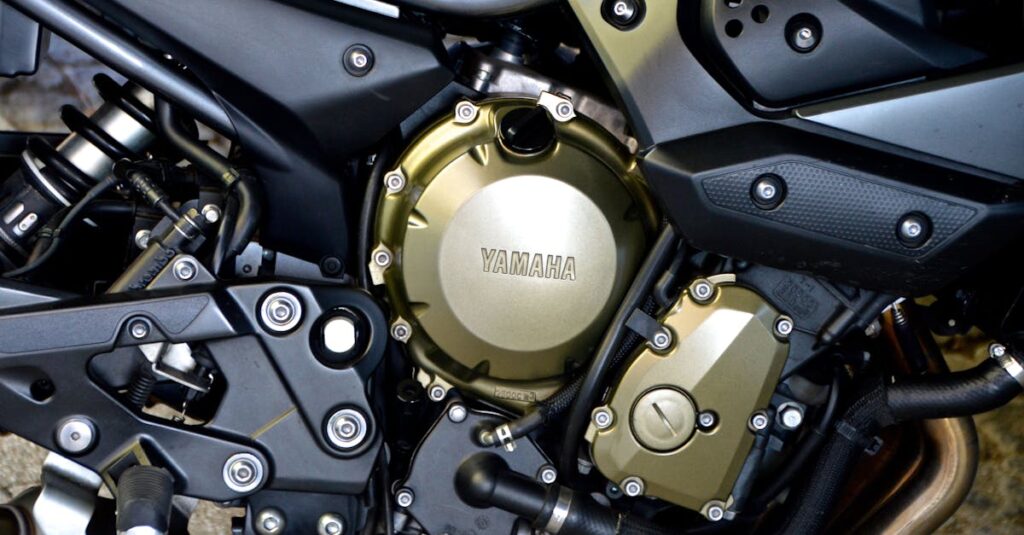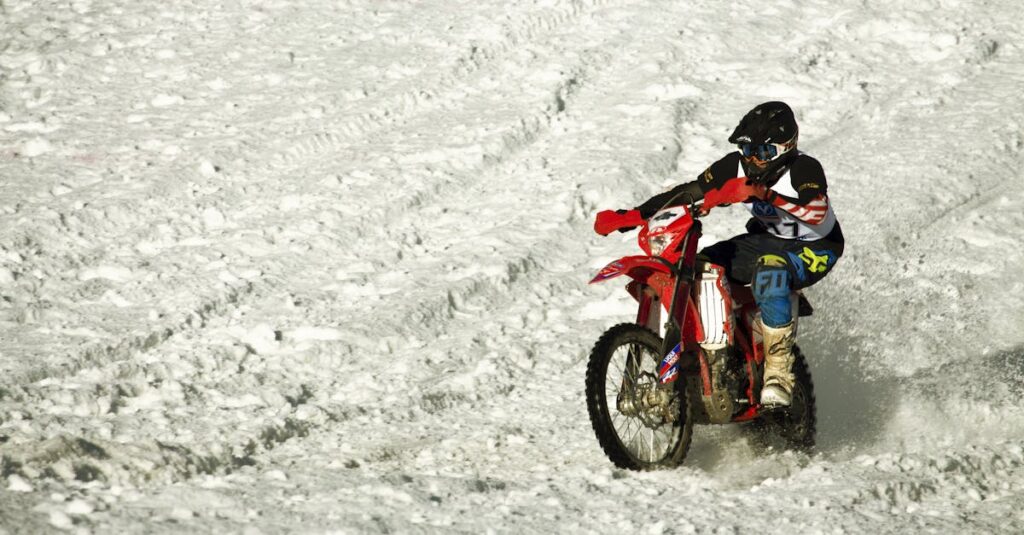When winter’s icy grip threatens to end the riding season, smart motorcyclists know better than to park their bikes. With the right cold weather gear, riders can transform from weather wimps to winter warriors and keep the two-wheeled adventures rolling all year long.
The key to comfortable cold-weather riding isn’t just about piling on layers like a motorcycle-riding marshmallow. Modern motorcycle gear combines advanced materials and clever design to keep riders warm and protected without sacrificing mobility. From heated gloves that feel like they’re powered by mini suns to windproof base layers that laugh in the face of freezing temperatures, today’s cold weather gear options make winter riding not just possible but actually enjoyable.
Motorcycle Cold Weather Gear
Cold weather motorcycle riding presents distinct physical challenges beyond standard riding conditions. Motorcyclists face unique environmental factors that impact both comfort and safety during winter rides.
Wind Chill Factor and Its Impact
Wind chill intensifies the effects of cold temperatures on motorcyclists during winter rides. A motorcycle traveling at 60 mph in 40°F weather creates an effective temperature of 25°F on exposed skin. This cooling effect penetrates traditional motorcycle gear through gaps and seams, leading to rapid heat loss. Exposed areas like the neck joints between helmets and jackets experience concentrated wind blast, creating cold spots that reduce overall body temperature. Wind chill also affects motorcycle handling as cold air causes tires to lose pressure and reduces grip on road surfaces.
Temperature Considerations for Riders
Body temperature management becomes critical when ambient temperatures drop below 50°F. Core body temperature drops 25% faster on a motorcycle compared to standing still, requiring additional protective measures. The extremities lose heat first, with fingers experiencing reduced dexterity at 45°F and toes following at 40°F. Sustained exposure to temperatures below 35°F triggers involuntary muscle tensing, affecting rider control and reaction time. Morning rides pose extra challenges as temperatures typically drop 5-10°F lower than forecasted daily averages.
| Temperature (°F) | Wind Speed (mph) | Effective Temperature (°F) |
|---|---|---|
| 40 | 60 | 25 |
| 35 | 60 | 18 |
| 30 | 60 | 12 |
Essential Base Layer Protection
Base layer protection forms the foundation of effective cold weather motorcycle gear. These layers work together to regulate body temperature and manage moisture during winter rides.
Thermal Underwear and Moisture-Wicking Materials
Modern thermal underwear combines merino wool and synthetic fabrics to create an effective temperature regulation system. Merino wool base layers maintain warmth even when damp, with natural antimicrobial properties that prevent odor buildup. Synthetic materials like polypropylene wick moisture away from the skin, keeping riders dry during intense rides. Top manufacturers produce specialized motorcycle base layers with flat seams to prevent chafing under protective gear.
| Material Type | Temperature Rating | Moisture-Wicking Level |
|---|---|---|
| Merino Wool | 20°F to 50°F | High |
| Polypropylene | 30°F to 60°F | Very High |
| Silk | 40°F to 65°F | Medium |
Neck and Face Protection Options
Neck gaiters trap warm air around the throat while blocking wind from entering jacket collars. Balaclavas provide full coverage for the head neck face with strategic ventilation points to prevent goggle fogging. Technical face masks incorporate windproof panels on exposed areas while maintaining breathability in covered zones. Combination solutions like neck tubes with built-in face protection offer versatility for varying weather conditions.
| Protection Type | Coverage Area | Wind Resistance |
|---|---|---|
| Neck Gaiter | Neck Only | Moderate |
| Balaclava | Full Head/Face | High |
| Face Mask | Face/Nose/Mouth | Very High |
Protective Outer Layers for Cold Weather
Protective outer layers create a crucial barrier against winter elements during motorcycle rides. These specialized garments combine insulation with wind resistance to maintain core body temperature in challenging conditions.
Insulated Motorcycle Jackets
Modern motorcycle jackets feature multiple layers of protection for cold weather riding. The outer shell incorporates waterproof materials like Gore-Tex or Cordura with sealed seams to block wind penetration. Premium jackets include removable thermal liners made from Thinsulate or PrimaLoft, offering warmth ratings down to 20°F. Strategic ventilation points allow moisture release while maintaining heat retention. Key features include:
- Adjustable collar systems with fleece lining
- Extended back panels to prevent drafts
- Storm flaps over zippers
- Reinforced shoulder padding with thermal properties
- Reflective panels for visibility in winter conditions
Winter Riding Pants and Suits
Winter motorcycle pants complement jackets with similar protective technologies. One-piece suits provide complete coverage without gaps at the waist. Technical features include:
- Waterproof textile construction with 600-1000 denier strength
- Full-length side zippers for easy layering
- Removable quilted liners rated for subfreezing temperatures
- Knee armor with thermal padding
- Boot gaiters to seal against drafts
- Reinforced seat areas with additional insulation
- Adjustable waist systems for customized fit
Heated Gear Solutions
Electric heating elements integrate into motorcycle apparel for additional warmth control. These systems connect to the motorcycle’s battery or portable power banks:
- Heated jacket liners maintaining 77-135°F
- Pants liners with multiple heating zones
- Heated collars targeting neck circulation
- Battery-powered vests lasting 4-8 hours per charge
- Wireless controllers with temperature adjustment
- Dual-power options for extended rides
- Quick-disconnect plugins for convenience
The heating elements use carbon fiber or metal wire technology placed strategically near vital areas. Connection points accommodate additional heated accessories like gloves or boot insoles.
Extremity Protection in Cold Conditions
Protecting hands and feet against cold temperatures maintains critical control over motorcycle operations. Proper extremity protection prevents numbness and maintains dexterity during winter rides.
Winter Motorcycle Gloves
Winter motorcycle gloves combine multiple layers of insulation with waterproof membranes to maintain warmth and grip control. Premium gloves feature Thinsulate™ insulation rated between 100g-200g, offering protection in temperatures as low as 20°F. Electric heated gloves provide 3-4 heat settings through battery-powered elements integrated into the fingers and palm areas. Quality winter gloves incorporate:
- Windproof outer shells made from leather or textile materials
- Moisture-wicking liners that prevent sweat accumulation
- Pre-curved fingers to reduce grip fatigue
- Reinforced palms with silicone grip patterns
- Extended gauntlet cuffs that seal against jacket sleeves
- 200g-400g Thinsulate™ or PrimaLoft® insulation
- Gore-Tex® waterproof liners that maintain breathability
- Oil-resistant rubber soles with enhanced cold-weather grip
- Reflective panels for increased visibility
- Reinforced toe boxes with impact protection
- Quick-release fastening systems for easy operation with gloves
- Gusseted tongues that prevent water intrusion
- Thermal footbeds with moisture-wicking properties
| Boot Feature | Temperature Rating | Wind Protection |
|---|---|---|
| Standard | Down to 40°F | Basic |
| Performance | Down to 25°F | Enhanced |
| Professional | Down to 0°F | Maximum |
Helmet and Face Shield Considerations
Cold weather motorcycle riding requires specific helmet modifications to combat visibility issues caused by temperature differences between inside and outside air. Proper helmet selection combined with anti-fog solutions ensures clear vision during winter rides.
Anti-Fog Solutions
Anti-fog treatments create a hydrophilic coating that prevents water vapor from condensing on face shields. Pinlock® inserts create a dual-pane system with an air barrier between the shield surfaces, eliminating fog in temperatures from 14°F to 54°F. Cat Crap™ anti-fog paste provides 24-hour fog resistance when applied to visor surfaces. Electric shield systems integrate heating elements that maintain consistent temperatures across the entire face shield surface.
Winter Helmet Accessories
Breath guards deflect exhaled air away from the face shield to reduce fogging in cold conditions. Thermal helmet liners made from moisture-wicking fabrics add 10-15°F of warmth while maintaining proper fit. Chin curtains block updrafts around the neck area through an elastic seal against the rider’s skin. Helmet skirts extend protection below the helmet shell to create a weatherproof barrier between jacket collars and helmet bases.
Weather-Resistant Gear Features
Modern motorcycle gear incorporates advanced materials and technology to protect riders from harsh winter conditions. Weather-resistant features enhance rider comfort through multiple defense layers against wind, rain and snow.
Waterproof Materials and Ratings
Weather-resistant motorcycle gear utilizes specialized membranes like GORE-TEX® and HydraTex® to create impenetrable barriers against moisture. These materials receive ratings based on their water resistance capabilities:
| Rating Level | Water Pressure (mm) | Weather Condition Performance |
|---|---|---|
| Level 1 | 5,000-10,000 | Light rain 1-2 hours |
| Level 2 | 10,000-15,000 | Moderate rain 2-4 hours |
| Level 3 | 15,000-20,000 | Heavy rain 4+ hours |
| Level 4 | 20,000+ | Extreme conditions |
Taped seams reinforce waterproof protection by sealing stitch holes with waterproof tape. Critical areas like shoulders shoulders collars receive additional weather-resistant treatments.
Ventilation Systems for Temperature Control
Strategic ventilation points regulate internal temperature while maintaining weather resistance. Motorcycle gear features multiple vent configurations:
- Chest vents allow direct airflow to the core body
- Underarm zippers release excess heat during activity
- Back exhaust ports expel warm moist air
- Thigh vents cool the lower body during movement
- Adjustable collar vents manage facial airflow
Mesh-lined vents include weatherproof covers to seal out elements when closed. Temperature regulation systems combine waterproof materials with moisture-wicking inner layers to prevent overheating during cold weather rides.
Modern cold weather motorcycle gear has revolutionized winter riding through innovative materials and smart design features. Today’s riders can confidently tackle cold temperatures with specialized equipment that offers superior protection against wind chill harsh elements and temperature fluctuations.
The right combination of base layers protective outerwear and essential accessories creates a comprehensive defense system for winter motorcycle enthusiasts. From heated gloves to advanced helmet technology riders now have access to gear that’s both functional and comfortable.
With proper cold weather gear motorcyclists can extend their riding season well into winter while maintaining safety and control on the road. These technological advancements have transformed what was once a challenging season into an opportunity for year-round riding adventures.



